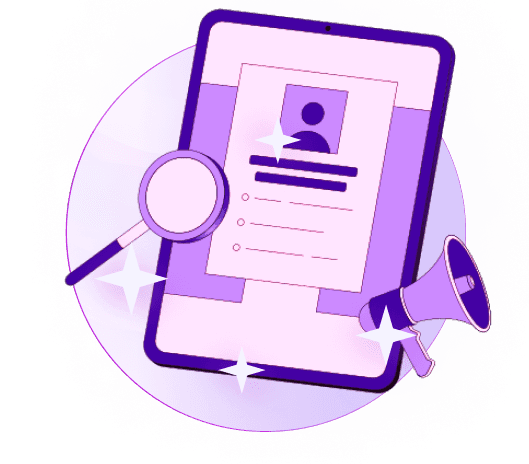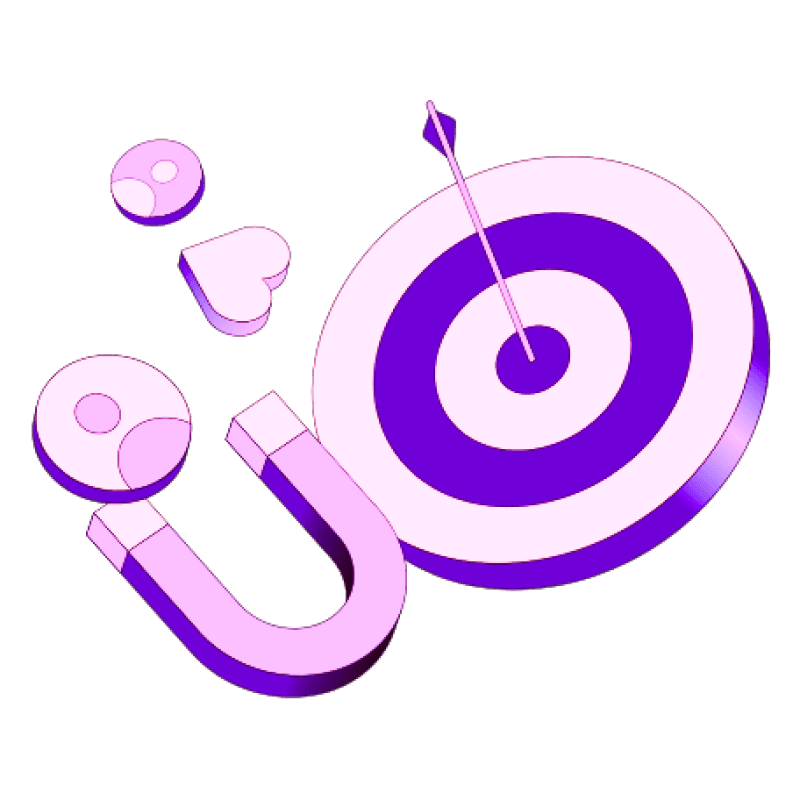Blogs
Articles

Waterfall Enrichment in CRM: How to Boost Data Accuracy & Coverage
Your valuable CRM contacts face a startling reality - 30% of B2B contact data becomes outdated each year. This means one-third of your database loses accuracy annually.
Sales reps waste 21% of their time due to poor data quality, which equals a full workday every week. A typical data provider returns valid information for just 30-60% of your prospect list.
Let's take a closer look at waterfall enrichment's inner workings, its impact on revenue, and the steps to set it up in your CRM system properly.
What is Waterfall Enrichment in CRM?
Waterfall enrichment fills gaps in your CRM contact information by flowing through multiple data sources one after another. The process sends incomplete contact records through various data providers until all fields get populated or available sources run out.
How is this different from traditional enrichment?
Traditional enrichment depends on just one data source that returns valid information for only 30-60% of prospect lists. So your outreach capabilities end up with major gaps. The beauty of waterfall enrichment lies in its chain-like structure. The system moves to the next provider automatically when one provider can't find specific information. Your data gets a safety net through this multi-layered system that ensures the highest possible completion rates.
The name 'waterfall' perfectly captures how data flows down through multiple sources, layer by layer, until it reaches peak completeness and reliability. Businesses that need rich, accurate customer information find this approach particularly valuable.
Why Data Accuracy and Coverage Matter?
Bad CRM data costs companies a fortune. US businesses lose about $3.1 trillion annually because of poor data quality. On top of that, companies lose around $15 million every year due to bad data.
What bad data does to sales and marketing
Poor data creates problems across entire organizations. Sales teams spend 21% of their time looking up incomplete data. That's like losing a full workday every week. Sales reps waste up to 550 hours or $32,000 each year because of bad data quality.
Marketing takes just as big a hit:
Bad bounce rates hurt your sender score and might get you blacklisted
Your campaigns miss their target audience and waste money
You can't tailor customer experiences, and 33% of customers will leave if you don't
Teams can't work well when 90% of contact databases have missing information and 20% of the data is completely useless.
How waterfall enrichment reduces bounce rates?
Waterfall enrichment in CRM makes email delivery better by checking addresses through multiple steps. This method can increase valid email rates by up to 55%. Your sender score stays healthy because fewer emails bounce.
This step-by-step process helps messages land in actual inboxes since each vendor fills different gaps in your data. Companies that use waterfall enrichment see improved connect rates and fewer failed outreach attempts. The result is a smoother, more effective pipeline.
How to Implement Waterfall Enrichment in Your CRM
A methodical execution makes waterfall enrichment implementation successful. Here's a breakdown of the process in five useful steps.
Step 1: Audit your current CRM data
Start with a deep look at your CRM to find gaps such as missing emails, outdated titles, or duplicate accounts. This audit creates a baseline to measure enrichment success. Your team should evaluate data regularly to spot inaccuracies, redundancies, and outdated information. Team members from sales, marketing, and IT should work together to spot critical data problems.
Step 2: Choose enrichment providers
Pick your enrichment tools based on data sources, accuracy, pricing, and how well they integrate. The best tools connect to multiple data vendors at once. Create a data supply chain with trusted third-party providers who follow privacy regulations. Tools like Clay, Clearbit, ZoomInfo, and Apollo can increase your records with firmographic and technographic data.
Step 3: Set up waterfall logic and fallback rules
Your strongest data provider should come first in the sequence due to their high match rate. Add cheaper providers later in the flow and pay for them only when the first provider fails. Create rules that protect quality data from being overwritten.
This strategy gives you maximum coverage at minimum cost—visit Persana.ai to get expert advice on making your waterfall enrichment strategy better.
Step 4: Integrate with CRM workflows
Set up automatic triggers that run enrichment when new data comes into your CRM. Run enrichment jobs weekly or monthly depending on your data decay rate. The provider's guide will help you connect through APIs, CSV imports, or pre-built connectors. Test everything after setup to confirm data accuracy.
Step 5: Monitor and iterate for accuracy
Keep track of how each provider performs. Watch metrics like data completeness, accuracy, and duplication rates. Set clear goals (duplication rates should stay under 2% and accuracy above 95%) and fix issues quickly when needed. Regular validation keeps your CRM data reliable for making decisions.
Top Tools for Waterfall Enrichment in 2025
Business teams now rely on specialized platforms to enrich their CRM systems with waterfall logic. These tools are a great way to get better data accuracy without manual work.
Persana: AI-powered waterfall logic
Persana sets itself apart with a unique data enrichment approach. It checks your preferred providers one after another and moves to the next source only when previous ones don't deliver results. The platform links to over 75 data providers and delivers better contact information than single-source solutions. Its PersanaVector™ Technology uses semantic intent recognition instead of simple keyword matching and achieves 76% higher relevance scores than traditional search methods.
The platform's AI agent Nia handles up to 90% of sales development tasks. Autopilot 2.0 works as a complete GTM engine that connects with leads 24/7. You can check out Persana's complete suite of waterfall enrichment tools to see how their pre-built playbooks eliminate the typical learning curve of complex data tools.
Clay: Customizable enrichment flows
Clay works as a detailed marketplace that brings over 75 data providers together in one platform. Teams can avoid managing multiple subscriptions while getting maximum data coverage with this all-in-one solution. The platform's waterfall enrichment searches through its network of providers until it gets the data points you need.
Clay lets you build custom data waterfalls by picking which providers to check first, so you get better coverage at lower costs. Your unused credits roll over to the next month. Plans start at $149/month for Starter, with Explorer ($349/month) and Pro ($800/month) options for growing teams.
LeadDelta: LinkedIn-based enrichment
LeadDelta changes LinkedIn into a structured CRM-like platform with powerful enrichment features. You can find verified business and personal emails plus phone numbers right from LinkedIn profiles, search pages, and company employee lists.
More than 30,000 professionals use LeadDelta every day. Its bulk CSV enrichment feature processes spreadsheets with missing contact information based on LinkedIn URLs. The platform runs on a flexible credits system where you pay only for what you use, whether you need to enrich five contacts or five hundred.
Conclusion
Good CRM data is the foundation of sales and marketing strategies that work. This piece shows how waterfall enrichment revolutionizes data management. It flows through multiple sources to fill information gaps. Companies have seen remarkable results - data completion rates jumped to 82% and generated 37% more pipeline.
The cost of poor data is staggering. Companies waste $3.1 trillion annually on bad data quality. Sales teams spend a full day each week looking up missing information. Waterfall enrichment isn't just helpful - it's crucial to stay competitive.
Start with a full CRM audit. Choose your enrichment providers based on how accurate they are and how well they integrate. Set up your waterfall logic by putting stronger providers first in line. Your careful setup will reduce bounce rates and improve connect rates. You'll see better conversion metrics too.
Platforms like Persana, Clay, and LeadDelta make implementation easy. These tools cut out manual data entry and maximize coverage across your prospect database.
FAQ
What is CRM data enrichment?
CRM data enrichment makes your Customer Relationship Management system better by adding missing information and updating existing records. The process creates detailed customer profiles that combine your first-party data with extra insights from third-party sources. Raw data might show simple contact details at first, but enrichment turns these basic records into detailed profiles. These profiles contain demographic information, social media details, purchase history, and behavioral patterns.
What is data enrichment in Zoho CRM?
Zoho CRM provides data enrichment through its AI assistant Zia. The feature crawls the web using primary information like email addresses, company names, or websites. Zia searches public websites to find more contact details about people and organizations. Users can turn on this feature by going to Setup > Zia > Data Enrichment and customizing settings for Leads, Accounts, and Contacts modules.

Create Your Free Persana Account Today
Join 5000+ GTM leaders who are using Persana for their outbound needs.
How Persana increases your sales results
One of the most effective ways to ensure sales cycle consistency is by using AI-driven automation. A solution like Persana, and its AI SDR - Nia, helps you streamline significant parts of your sales process, including prospecting, outreach personalization, and follow-up.



